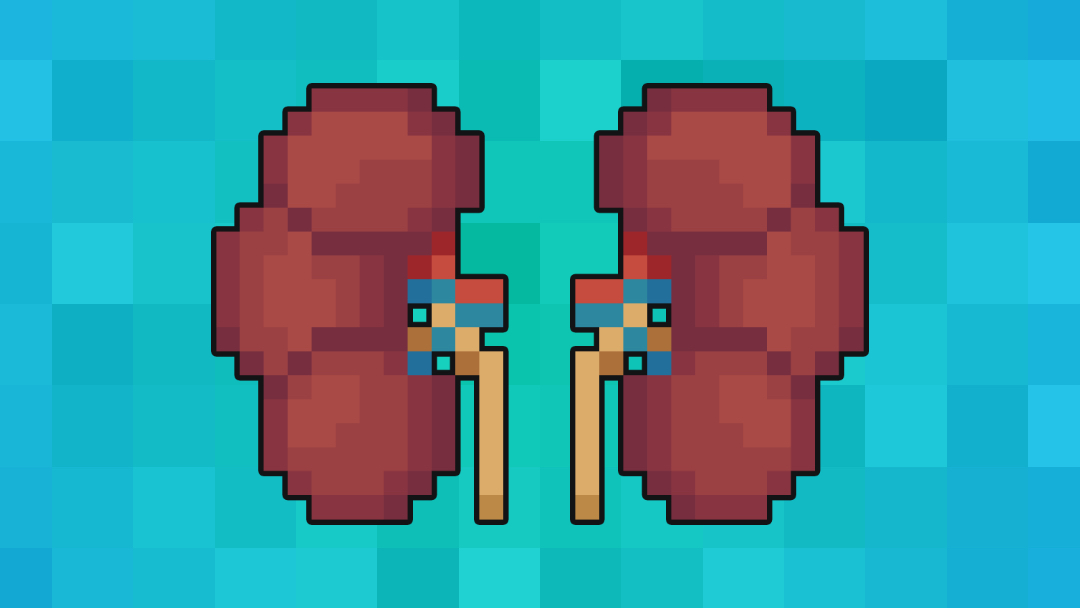- 📖 Geeky Medics OSCE Book
- ⚡ Geeky Medics Bundles
- ✨ 1300+ OSCE Stations
- ✅ OSCE Checklist PDF Booklet
- 🧠 UKMLA AKT Question Bank
- 💊 PSA Question Bank
- 💉 Clinical Skills App
- 🗂️ Flashcard Collections | OSCE, Medicine, Surgery, Anatomy
- 💬 SCA Cases for MRCGP
To be the first to know about our latest videos subscribe to our YouTube channel 🙌
This article provides a very brief overview of nephrotic and nephritic syndrome, to help you differentiate the two conditions. If you want to learn more, you can read our deep dive into glomerulonephropathies.
Nephrotic syndrome
Nephrotic syndrome is a condition involving the loss of significant volumes of protein via the kidneys (proteinuria) which results in hypoalbuminaemia. The definition of nephrotic syndrome includes both massive proteinuria (≥3.5 g/day) and hypoalbuminaemia (serum albumin ≤30 g/L). 1
Clinical features
As a result of hypoalbuminaemia, nephrotic syndrome is associated with oedema (due to reduced oncotic pressure), hyperlipidaemia and hypercoagulability.
Symptoms
Symptoms of nephrotic syndrome can include:
- Peripheral oedema (more common in adults)
- Facial oedema (more common in children)
- Frothiness of urine
- Fatigue
- Poor appetite
- Recurrent infections (due to immune dysfunction)
- Venous or arterial thrombosis (e.g. myocardial infarction, deep vein thrombosis) due to hypercoagulability
Clinical signs
Clinical signs of nephrotic syndrome can include:
- Oedema (e.g. peri-orbital, lower limb, ascites)
- Xanthelasma and/or xanthoma
- Leukonychia
- Shortness of breath (with associated chest signs of pleural effusion – e.g. stony dullness in lung bases)
Urinalysis
Typical findings on urinalysis in the context of nephrotic syndrome include:
- Proteinuria (protein ++++)
- Frothy appearance
Nephritic syndrome
Nephritic syndrome is a condition involving haematuria, mild to moderate proteinuria (typically less than 3.5g/L/day), hypertension, oliguria and red cell casts in the urine.
Clinical features
Symptoms
Symptoms of nephritic syndrome can include:
- Haematuria (can be frank haematuria or microscopic)
- Oedema (to a lesser extent compared to nephrotic syndrome)
- Reduced urine output
- Uraemic symptoms (e.g. reduced appetite, fatigue, pruritus, nausea)
Clinical signs
Clinical signs of nephritic syndrome can include:
- Haematuria (either visible or detectable on urinalysis)
- Oedema
- Hypertension
- Oliguria (<300mls/day)
Urinalysis
Typical findings on urinalysis in the context of nephritic syndrome include:
- Haematuria (blood +++)
- Proteinuria (mild – protein ++)
- Red cell casts – distinguishing feature of nephritic syndrome, form in nephrons and indicate glomerular damage
References
- Nishi S, Ubara Y, Utsunomiya Y, et al; Evidence-based clinical practice guidelines for nephrotic syndrome 2014. Clin Exp Nephrol. 2016 Jun20(3):342-70. doi: 10.1007/s10157-015-1216-x. Available from: [LINK]
- Dr Colin Tidy. Patient.info. Acute Nephritis. Published: 21st June 2016. Available from: [LINK]




